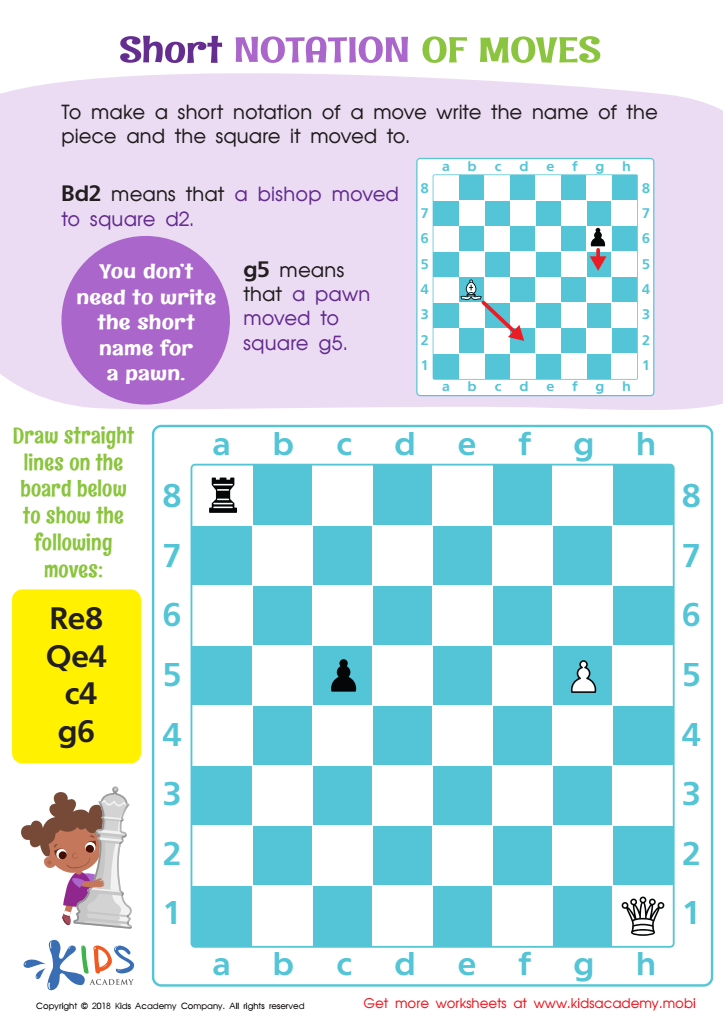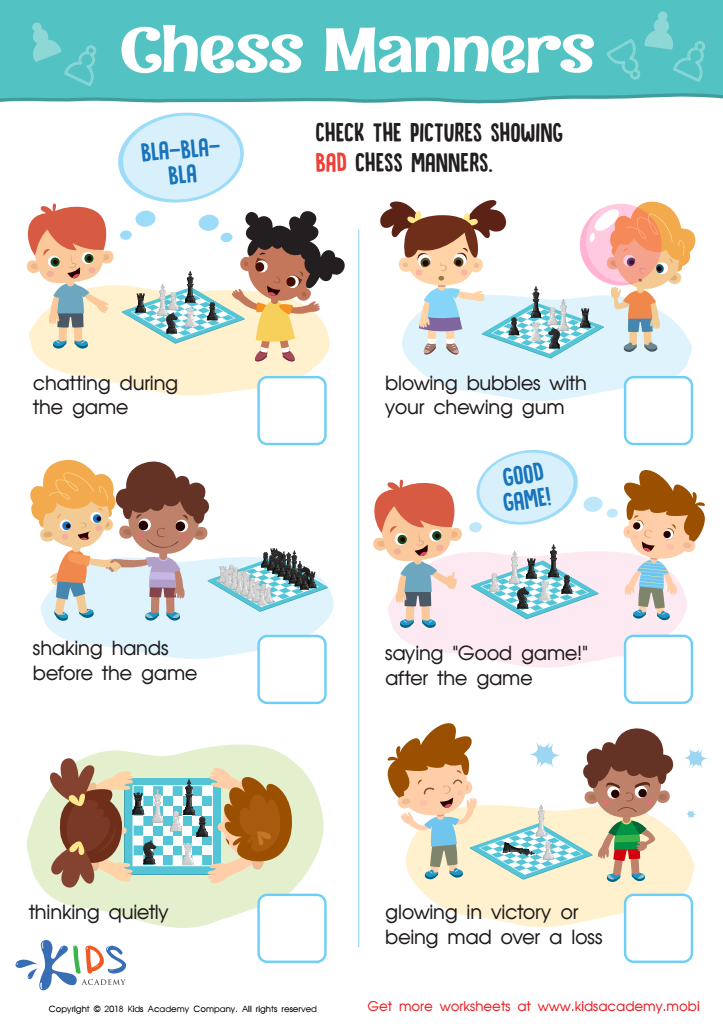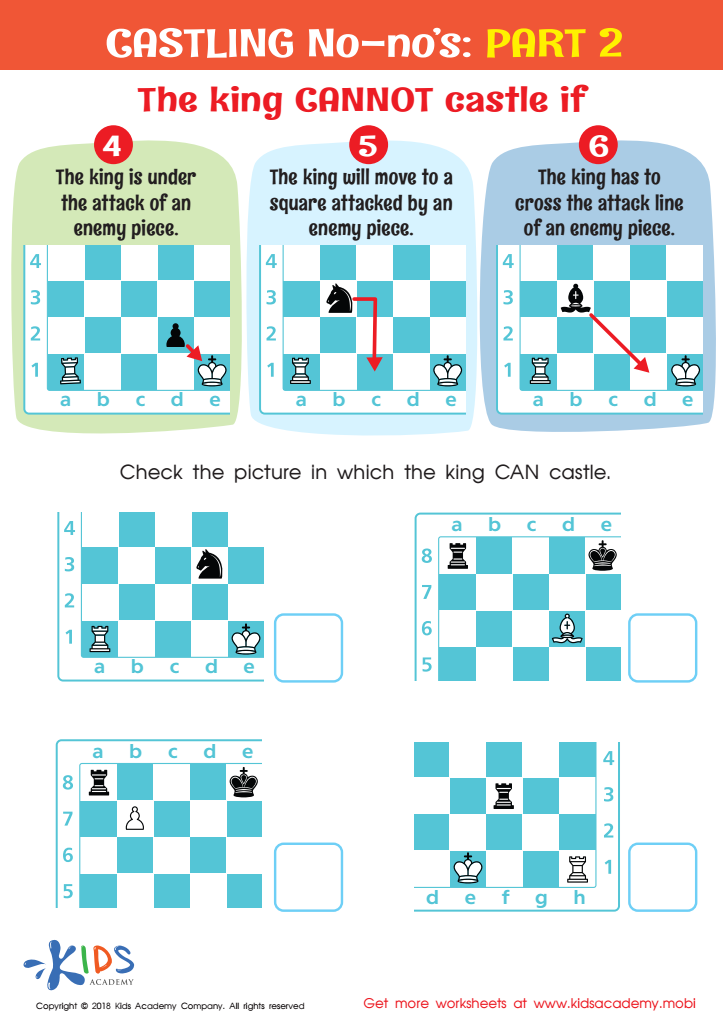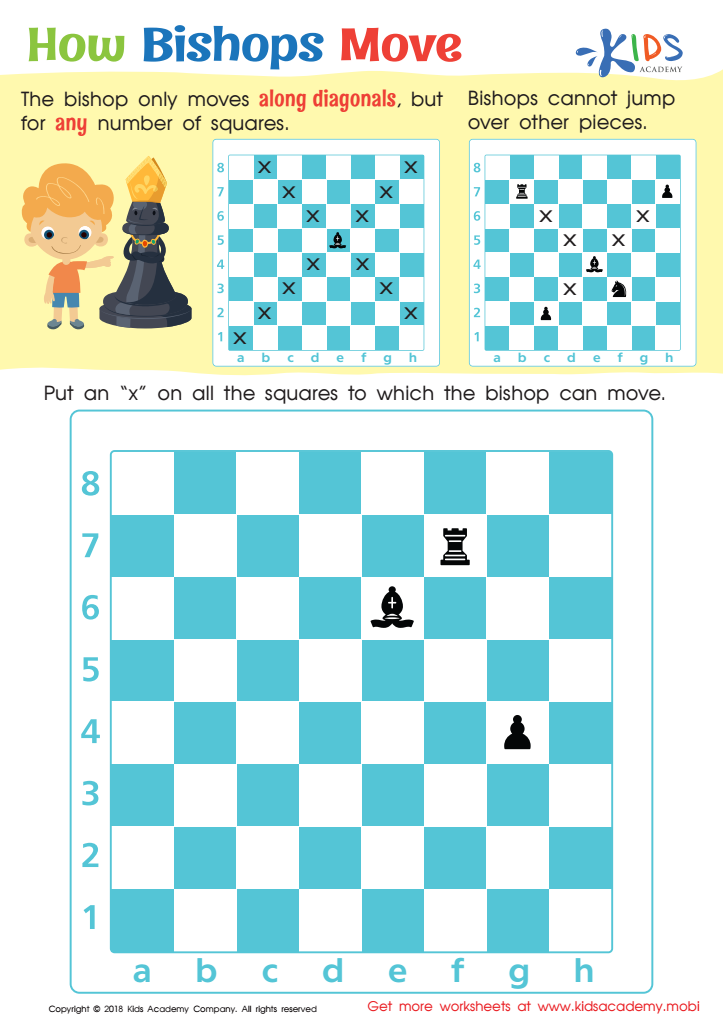Chess rules understanding Worksheets for Ages 3-7
4 filtered results
-
From - To
Introduce your child to the exciting world of chess with our Chess Rules Understanding Worksheets for Ages 3-7! These kid-friendly worksheets offer a fun and engaging way for young learners to grasp the basics of chess. Featuring colorful illustrations and simple instructions, each worksheet is designed to teach essential chess rules, piece movements, and strategies. Perfect for home or classroom use, these printables will help children develop critical thinking skills, improve focus, and foster a love for one of the world's most popular games. Start your child's chess journey today and watch their confidence soar as they master the game!


Short Notation of Moves Worksheet


Chess Manners Worksheet


Castling No - no's: Part 2 Worksheet


How Bishops Move Worksheet
Understanding chess rules is crucial for young children aged 3-7 not just because of the game's intellectual engagement, but because of the vast range of developmental benefits that accompany learning how to play. Chess stimulates cognitive development by enhancing problem-solving skills, critical thinking, and memory. Each move requires children to think ahead, teaching them the value of foresight and strategic planning. Furthermore, chess fosters patience and discipline as children must wait their turn and think carefully about their moves.
Socially and emotionally, playing chess can boost self-esteem and resilience. Winning cultivates confidence, while losing teaches children how to handle defeat gracefully and to learn from their mistakes. Additionally, the game has specific rules and structure that help children understand the importance of following guidelines, which is a key element in their early educational journey.
For parents and teachers, encouraging chess offers an opportunity to bond with the child while actively participating in their intellectual and personal growth. As children learn to play, they develop communication skills by discussing strategies and moves with peers or mentors. Ultimately, the skills and discipline acquired from playing chess can translate into better academic performance and improved life skills, laying a strong foundation for their formative years and beyond.
 Assign to My Students
Assign to My Students






.jpg)














